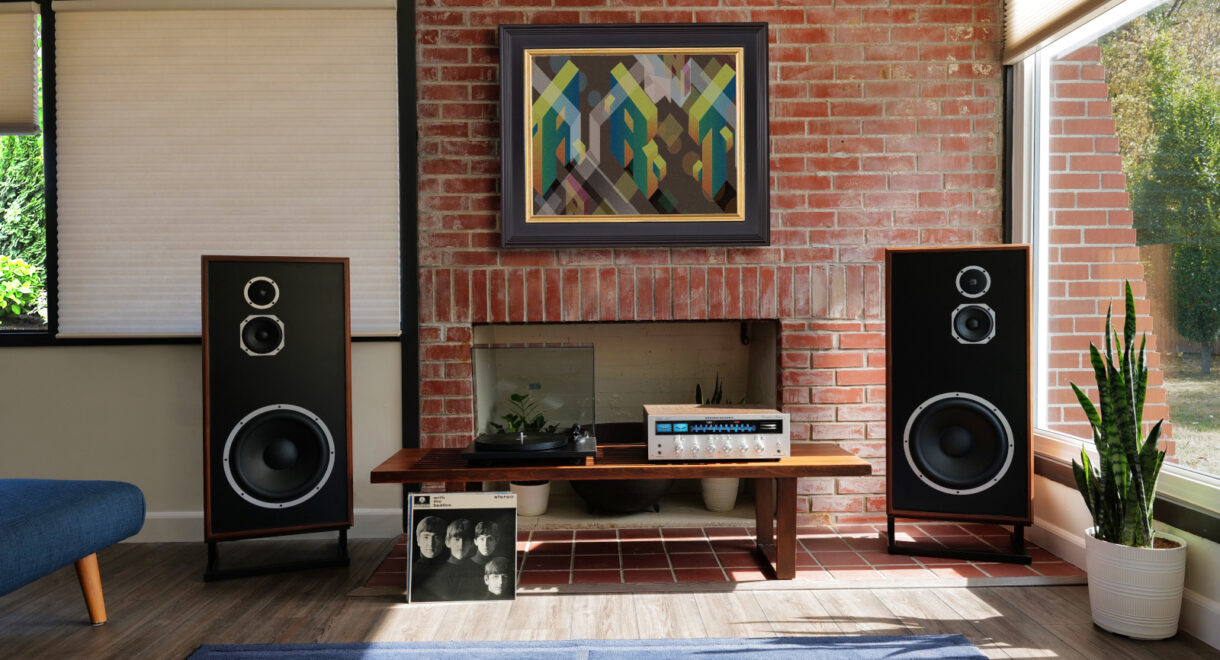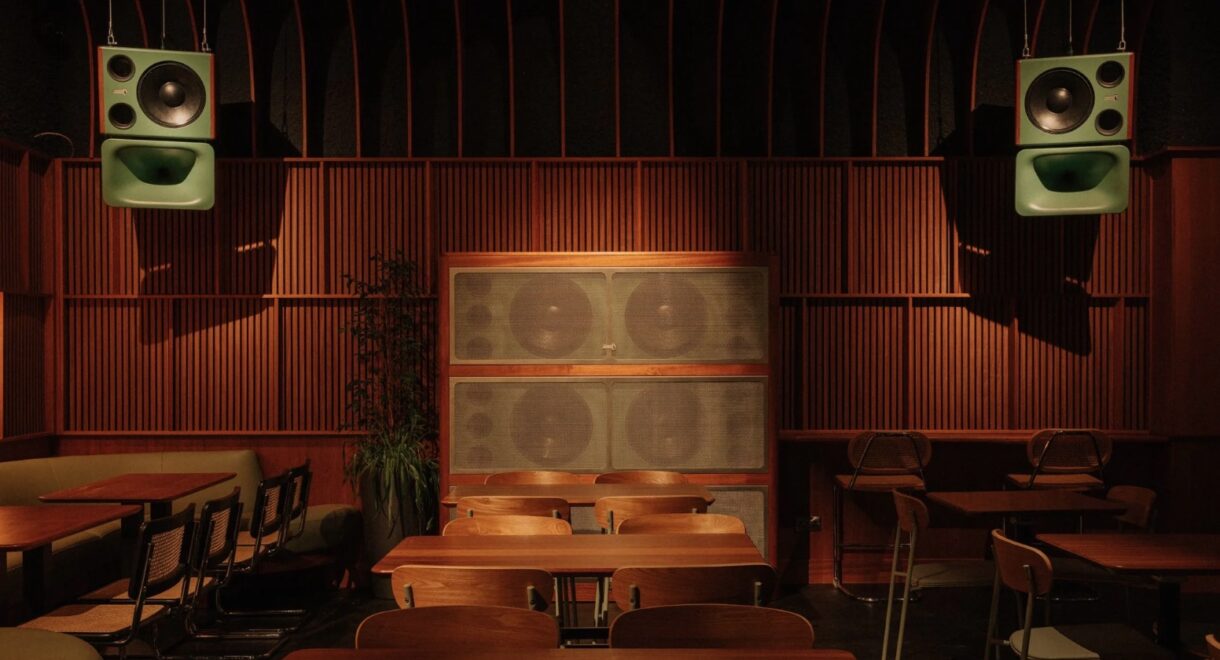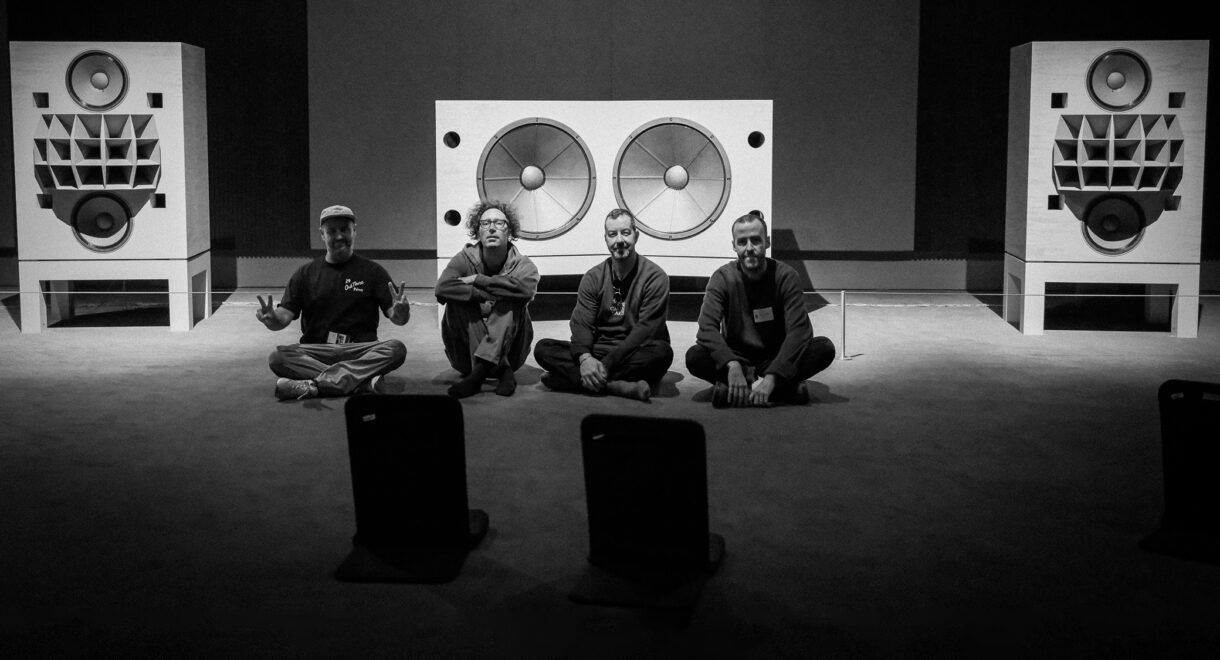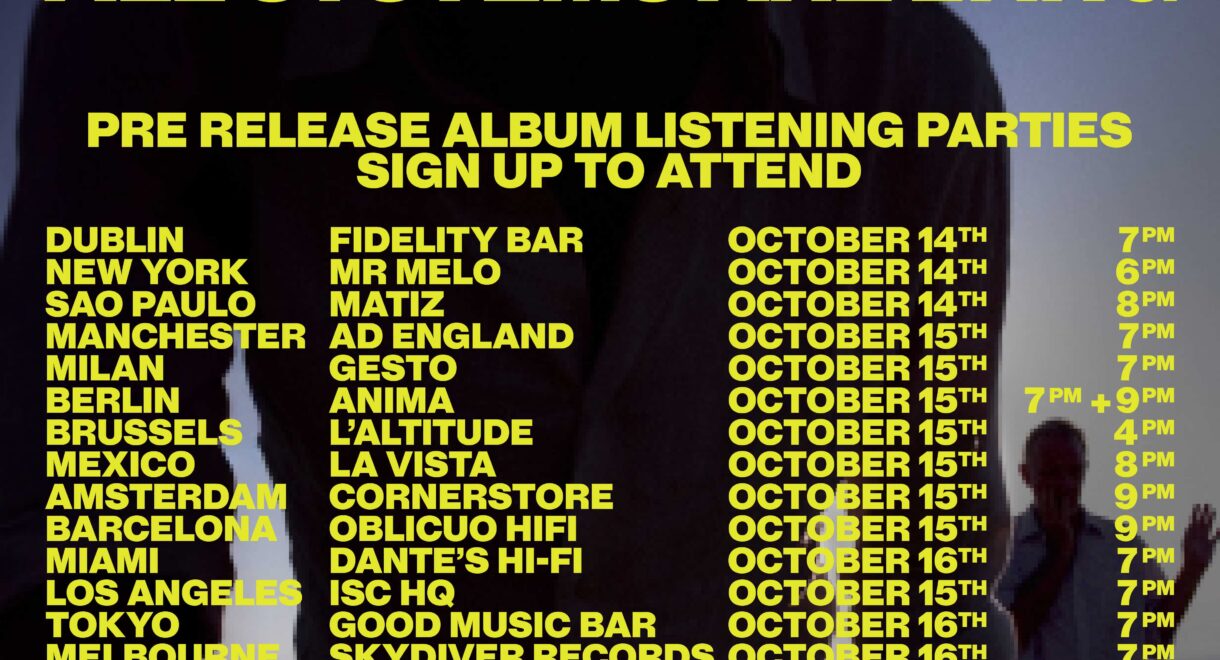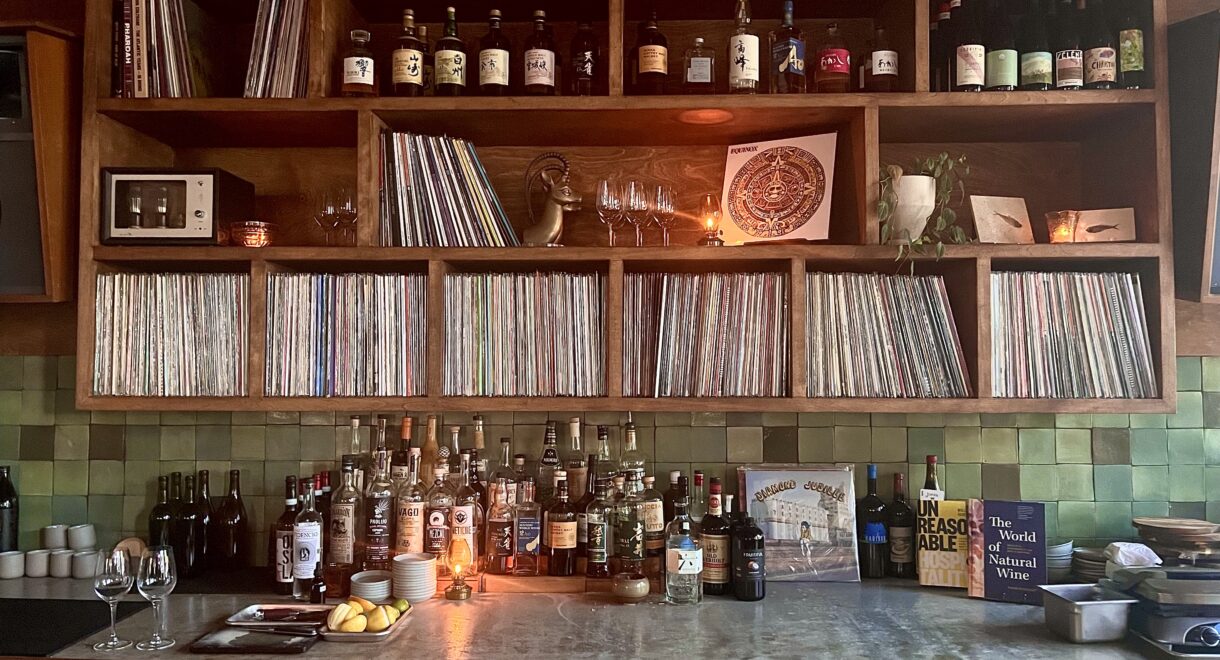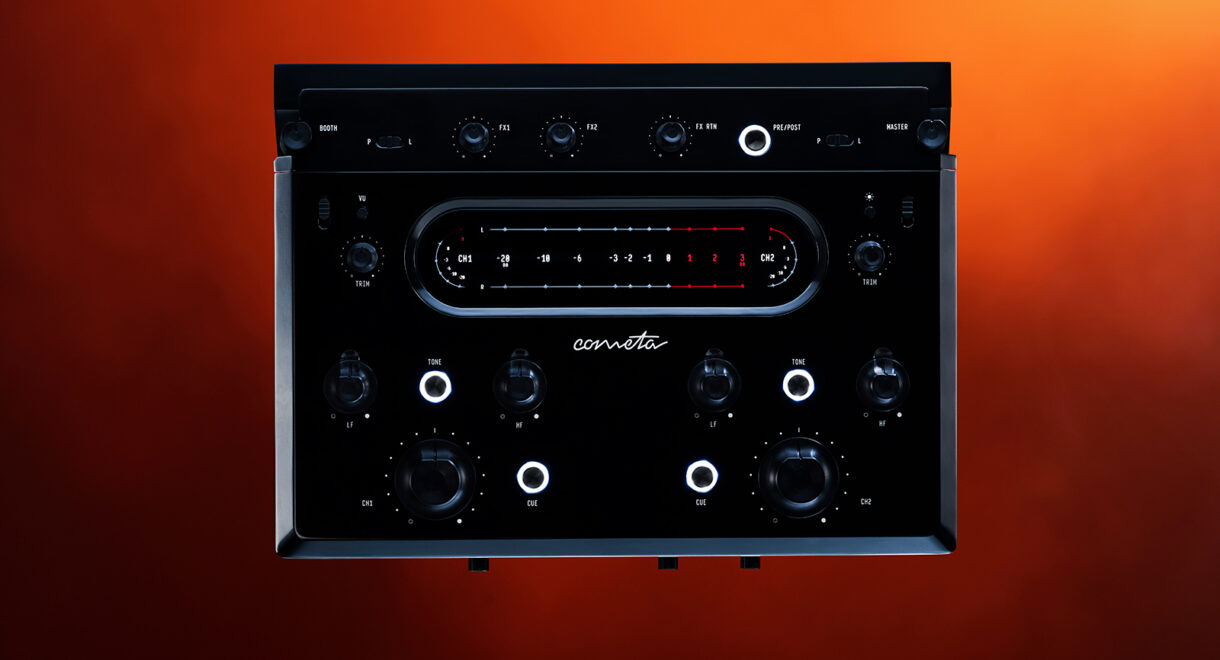November 20th, hear the new KLH Model Seven speakers at a curated listening session at The Wallis. As part of our ongoing focus on hi-fi equipment from the […]
When Form Follows Fidelity: Inside Small Hours in Minneapolis

Anchored by Klipsch La Scalas and guided by sommelier Sarina Garibović’s wine list, Sam Cassidy’s hand-built Small Hours turns deep listening into a form of hospitality.
In a quiet pocket of northeast Minneapolis, a bar opened in 2024 where the night is designed to unfold one album side, or shared bottle of wine, at a time. Musician and carpenter Sam Cassidy built it himself, the way others might build a secluded cabin or an altar. The idea wasn’t novel — Tokyo’s kissas and the new wave of American listening bars had already repositioned recorded music as a central concern — but Cassidy wanted his version to feel local, hands-on, and lived in.
He found his counterpart in sommelier Sarina Garibović, whose approach to wine mirrors his to music: slow, precise, and grounded in taste. “Our wine program and service model are designed to spark a deeper engagement with wine, always starting with the producer and the reasons why they make wine where, and how they do,” Garibović says. “We open the door to this experience by highlighting good wine wherever we find it, whether humble farmer or iconic producer, always with the goal of getting something new and inspiring into our guests’ glass.”
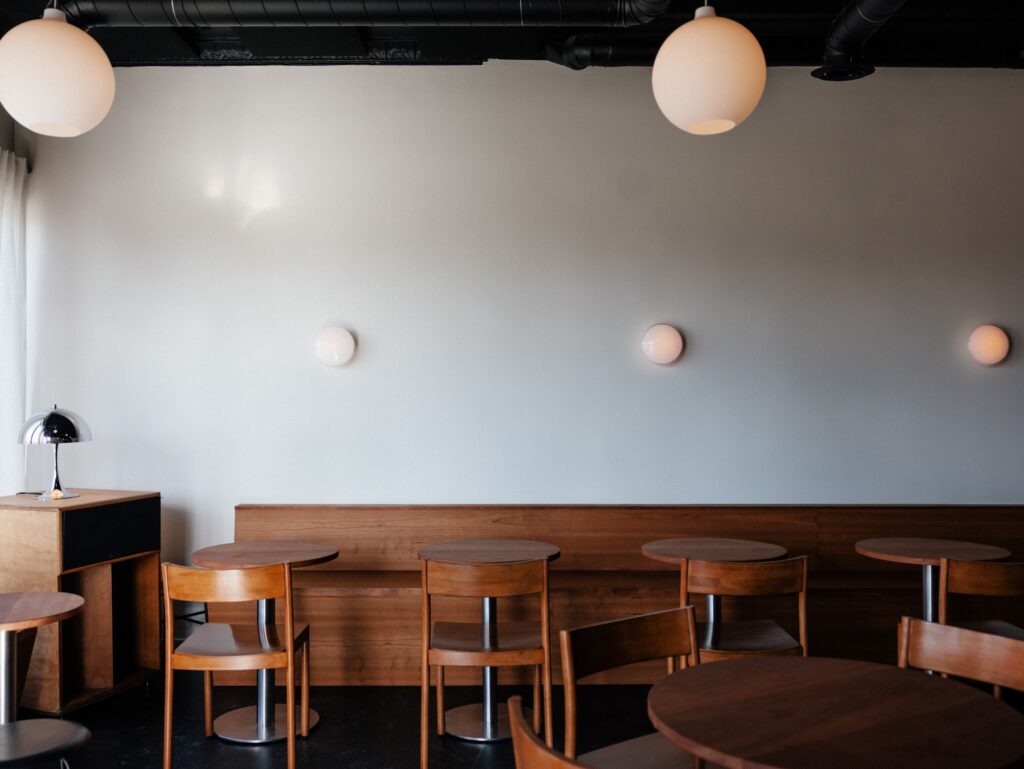
Cassidy’s philosophy runs on the same frequency. As he told The Current, “I try to focus on things that are maybe a little off the beaten path or people don’t hear all the time. I hope that people leave having discovered something new or heard something that they’re surprised to hear at a bar.” He added, “[Our goal is] not to be cooler than you or anything like that. It’s that I really enjoy this stuff, and I think it should be heard more.”
It makes sense that Minneapolis — where crate-diggers, musicians, artists and engineers have always blurred the line between craft and community — would be the kind of city to birth a space like this. Small Hours isn’t chasing novelty. It’s refining the familiar: a bar, a record, a glass, and the rare pleasure of hearing something fully. Cassidy recently spoke with us about Small Hours’ first year. The following has been lightly edited for length and clarity.
What's your background? How did your experiences with music start?
I’ve been collecting records since I was about 15, and got more serious in the last 15 years or so. I’ve also played in bands since then, so I’ve got a bit of experience there. But really, I just love music. I’m a fan first. The hi-fi bug eventually bites us all. You start thinking, “I could make this sound better,” and down the rabbit hole you go.
So you were into audio gear and sound before Small Hours?
Definitely, yeah.
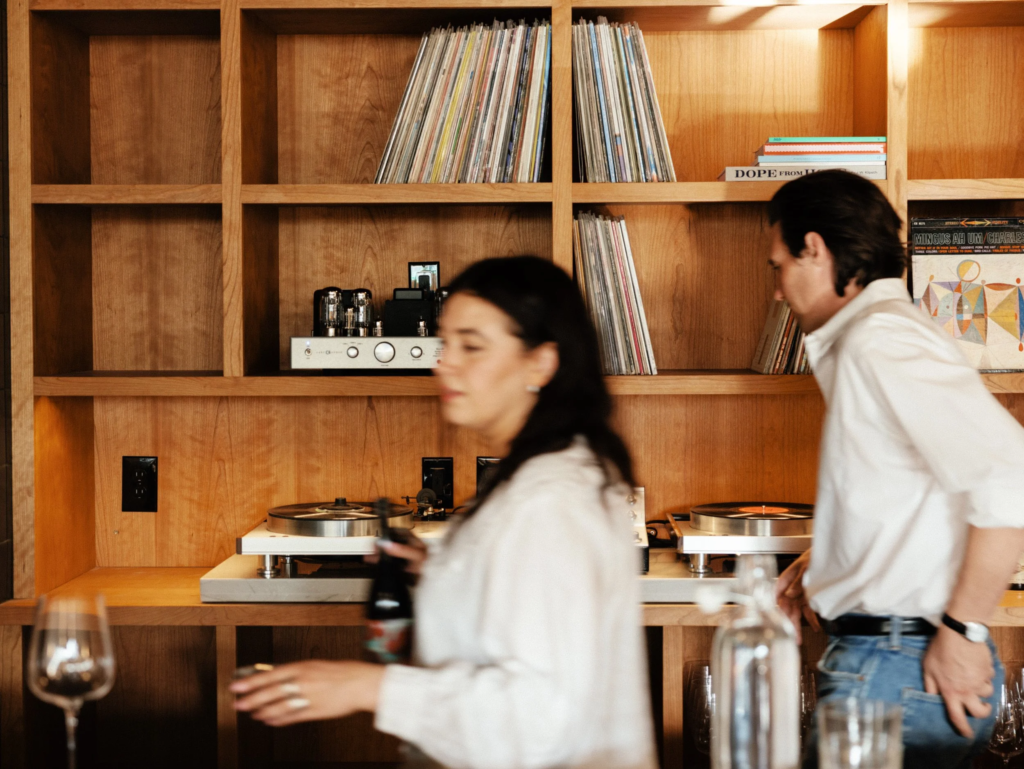
How did Small Hours come about.
I first heard about the Japanese kissas maybe eight or ten years ago — probably on an Aquarium Drunkard podcast — and thought, “That’s where I want to spend my time.” Eventually I started realizing that these places were popping up, and maybe it was realistic to try one myself. My professional background is in carpentry, about 15 or 20 years, so I thought maybe I could build the place. I didn’t know how to run it, though. Then I met my business partner, Sarina Garibović, who has a ton of hospitality experience. She had a similar idea about creating a small place to share what she loved, which is wine. We combined forces and took it from there.
You just celebrated your first anniversary. How’d the first year go?
It’s been good. We’ve learned a lot. The restaurant business is fickle and the economy’s funny right now, but it’s been a great learning experience. I went from a nine-to-five carpenter to working all hours, but it’s been fun. We’re building a loyal customer base — people who really get what we do. Minneapolis has a great community.
Tell me about the location. Why did you pick that neighborhood, and how does it fit what you wanted to build?
We’re in northeast Minneapolis, which is where I’ve lived the whole time I’ve been here. It strikes a nice balance — very much a neighborhood bar, right in a residential area but surrounded by businesses. The building’s the perfect size. I always knew I wanted it small for manageability and sound. A lot of listening bars are huge, but I wasn’t interested in that. I wanted something intimate and focused.
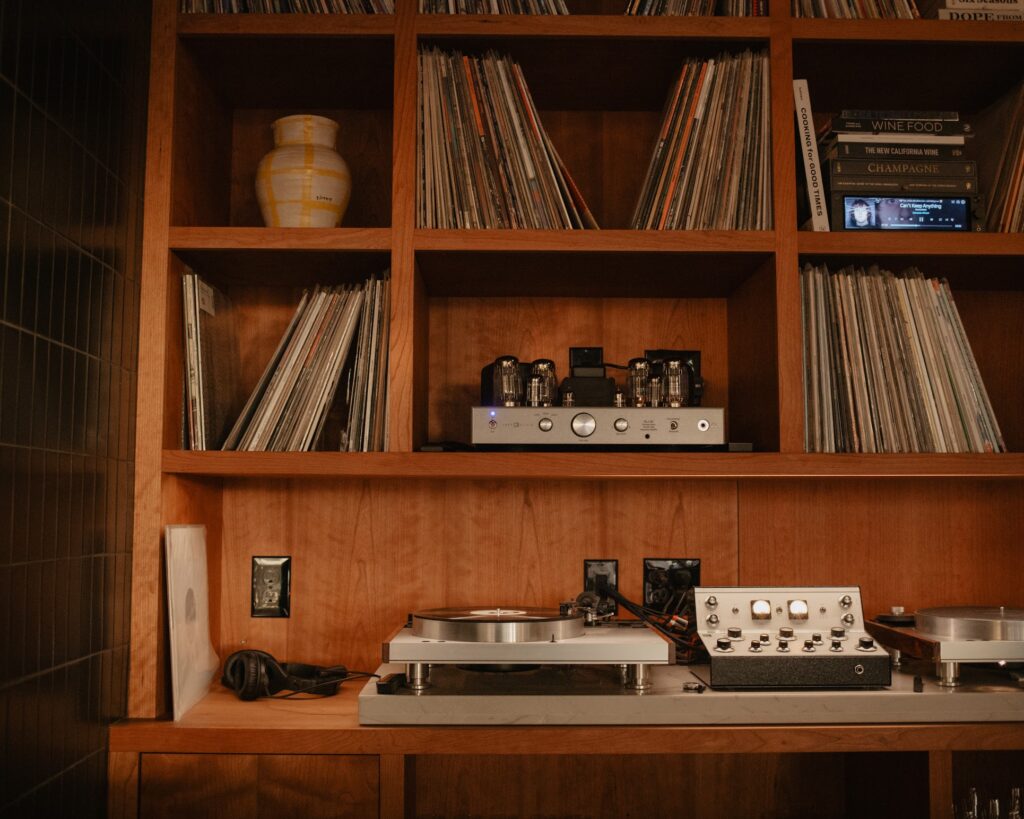
From a sound perspective, what was opening week like? What adjustments did you have to make once people filled the room?
That’s an ongoing process. I treated the room as best I knew how at the start, and we’re constantly refining. The first thing was isolating the Klipsch La Scalas off the ground, which helped a lot. We added some Heresies in the opposite corners, which balanced the sound. It’s always evolving. We want it full and present but not overwhelming for anyone sitting close.
It’s unrealistic to expect people to be silent on a Saturday night, but there’s a way to make the music part of the atmosphere.
Totally. You can’t expect Americans to go anywhere and just shut up.
Do you set any boundaries around volume?
We try to. We want the music to stay front and center but still comfortable. If the music gets too loud, people just talk louder — it’s a feedback loop.
How did you build your collection, and how you organize it? What defines the space?
The collection is basically my personal collection from the past 20-some years. I’ve traveled a bit and picked up records in the U.S. and Europe, so it’s a mix. We’re very intentional about what we play. We even did a giveaway of five records that defined our first year: Ptah, the El Daoud by Alice Coltrane, the first Curtis Mayfield album, Hats by The Blue Nile, Spirit of Eden by Talk Talk, and Notes with Attachments by Pino Paladino and Blake Mills. (Below: A Small Hours-created playlist with sublime piano music.)
Do you host guest DJ nights?
We do, every Wednesday. It started as a way to bring in friends whose taste I respect. I tell them it’s not a set to make people move — it’s a set to make people pay attention. It’s a great way to share and discover music. Over time, people started reaching out to play, and if I can tell that a customer has a deep collection, I invite them in. A lot of first-timers, so I end up teaching people how to use the mixer.
That’s a great idea. Is there a specific record people always ask about or try to Shazam?
There are a few. One’s a newer record from Contrahouse, a kind of supergroup — Bruce Hornsby plays on it. People are always shocked. Another one is Joni Mitchell’s Dog Eat Dog. People are surprised when they realize it’s her.
Her ’80s records are fascinating.
Totally. That one was produced by Thomas Dolby.
Tell me about the audio setup. How did you build it?
I’d had the idea for a hi-fi bar for years before Small Hours. One day I saw a pair of Klipsch La Scalas on Craigslist for a ridiculous price — so low I thought it was fake. I called the guy, and he said he just wanted to A/B them against his Altecs. I drove 40 minutes, bought them, and suddenly had these massive speakers in my living room for two years. They didn’t fit at all, so I figured I needed to open a bar to give them a home.
They’ve got character — beat up in the right way. The rest of the system is a mix of vintage and new: a Cary Audio SLI-80 integrated amp, two Luxman turntables, and a pair of Heresies in the corners. We’ve swapped a few things over time, but that’s the core.
Excellent. Thanks again, Sam.
Thank you, Randall. Come visit — bring some records, we’ll get you behind the bar.




